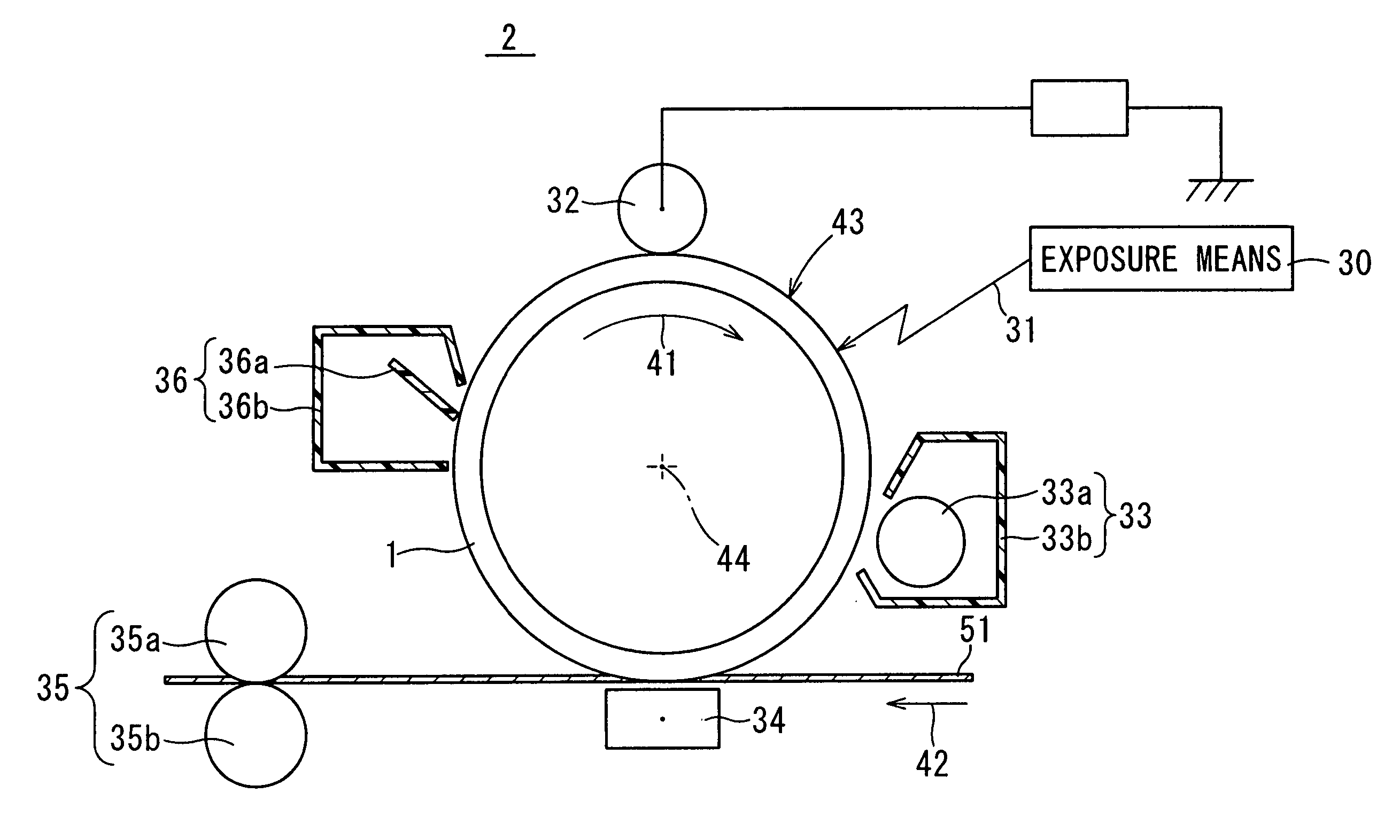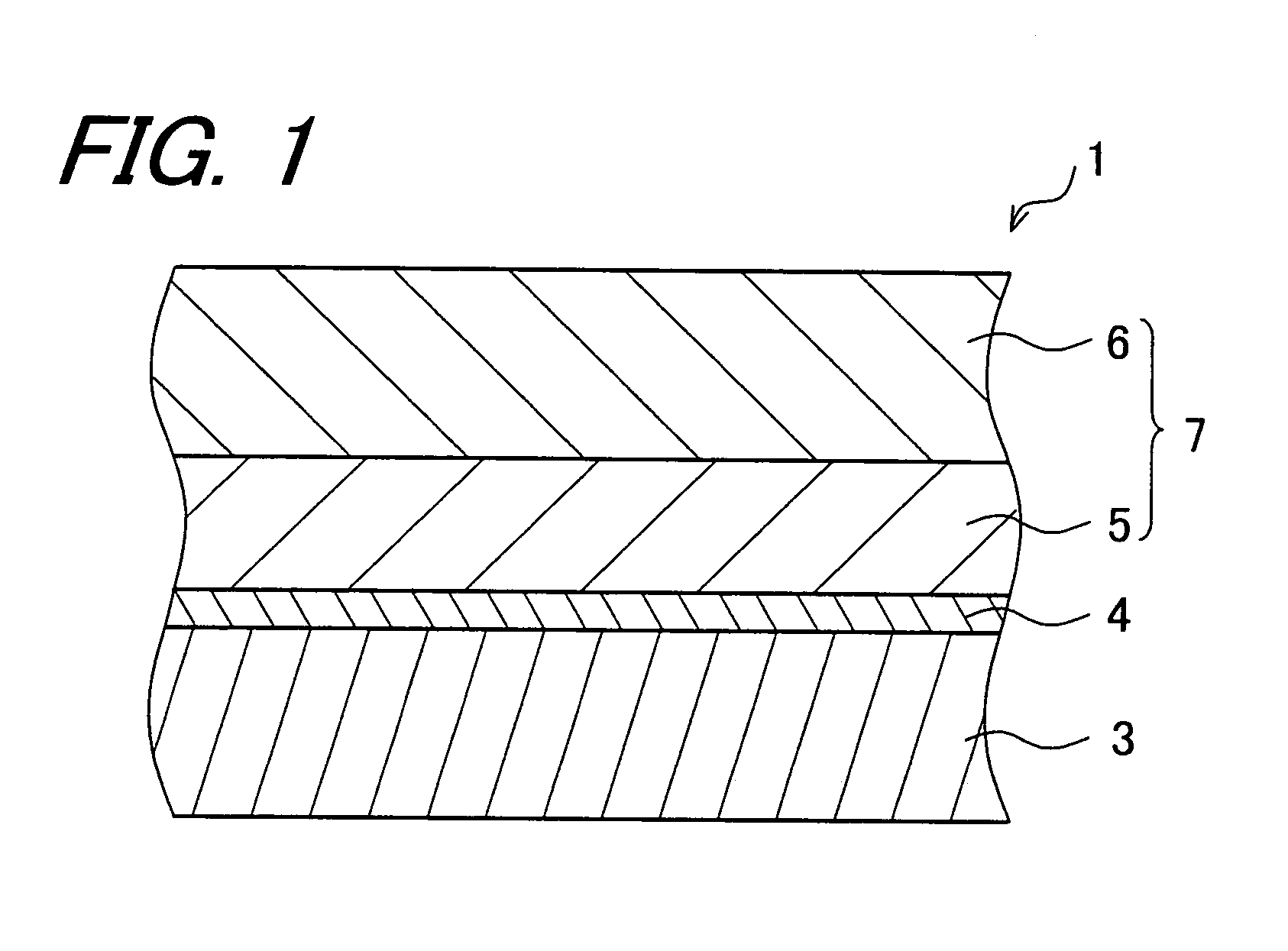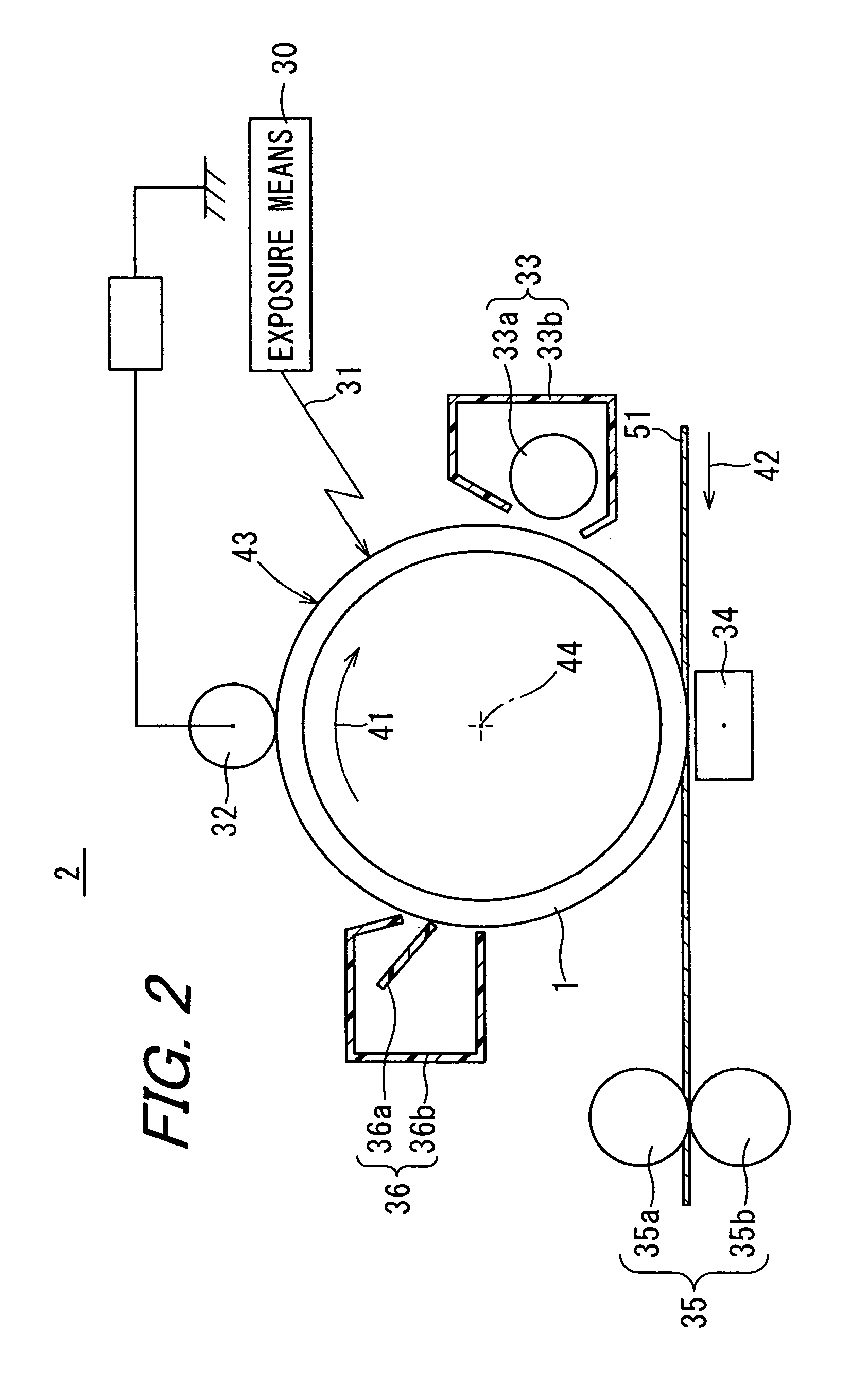Electrophotographic photoreceptor and image forming apparatus provided with the same
a photoreceptor and photoreceptor technology, applied in the direction of electrographic process, instruments, corona discharge, etc., can solve the problems of difficult to uniformly deposit the film of the photosensitive layer, low sensitivity and durability, etc., to achieve excellent life duration of abrasion resistance, high sensitivity, and sufficient light responsiveness
- Summary
- Abstract
- Description
- Claims
- Application Information
AI Technical Summary
Benefits of technology
Problems solved by technology
Method used
Image
Examples
production example
Production Example 1
Production of Exemplified Compound No. 1
[0194](Production Example 1-1) Production of Enamine Intermediate
[0195]23.3 g (1.0 equivalent) of N-(p-tolyl)-α-naphthylamine represented by the following structural formula (8), 20.6 g (1.05 equivalents) of diphenylacetaldehyde represented by the following structural formula (9), and 0.23 g (0.01 equivalents) of DL-10-camphorsulfonic acid were added to 100 ml of toluene and heated, and these were reacted for 6 hours while the by-product water was removed out of the system through azeotropic distillation with toluene. After completion of the reaction, the reaction solution was concentrated to about 1 / 10, and gradually dribbled into 100 ml of hexane that was vigorously stirred so that a crystal was produced. The produced crystal was taken out through filtration, and washed with cold ethanol, thereby obtaining 36.2 g of a pale yellow powdery compound.
[0196]
[0197]The obtained compound was analyzed through liquid chromatography...
production example 2
Production of Exemplified Compound No. 61
[0212]In the same manner as in Production Example 1 except that 4.9 g (1.0 equivalent) of N-(p-methoxyphenyl)-α-naphthylamine was used in place of 23.3 g (1.0 equivalent) of N-(p-tolyl)-α-naphthylamine represented by the structural formula (8), an enamine intermediate was produced (yield: 94%) through dehydrating condensation and an enamine-aldehyde intermediate was produced (yield: 85%) through Vilsmeier reaction, and this was further subjected to Wittig-Horner reaction so that 7.9 g of an yellow powdery compound was obtained. The equivalent relationship between the reagent and the base body used in each reaction was the same as that in Production Example 1.
[0213]The obtained compound was analyzed through LC-MS, which gave a peak at 556.7 corresponding to the molecular ion [M+H]+ of the intended enamine compound which is an Exemplified Compound No. 61 shown in Table 9 (calculated molecular weight: 555.26) with a proton added thereto.
[0214]Th...
production example 3
Production of Exemplified Compound No. 46
[0217]2.0 g (1.0 equivalent) of the enamine-aldehyde intermediate obtained in Production Example 1-2, which is represented by the structural formula (11), and 1.53 g (1.2 equivalents) of a Wittig reagent of the following structural formula (13) were dissolved in 15 ml of anhydrous DMF, and 0.71 g (1.25 equivalents) of potassium t-butoxide was gradually added to the solution at room temperature, then heated up to 50° C., and stirred for 5 hours while heated so as to keep 50° C. The reaction mixture was left cooled, and poured into excess methanol. The deposit was collected, and dissolved in toluene to prepare a toluene solution thereof. The toluene solution was transferred into a separating funnel and washed with water, and the organic layer was taken out. The taken-out organic layer was dried with magnesium sulfate. Solid matter was removed from the thus-dried organic layer, which was then concentrated and subjected to silica gel column chrom...
PUM
| Property | Measurement | Unit |
|---|---|---|
| temperature | aaaaa | aaaaa |
| thickness | aaaaa | aaaaa |
| thickness | aaaaa | aaaaa |
Abstract
Description
Claims
Application Information
 Login to View More
Login to View More - R&D
- Intellectual Property
- Life Sciences
- Materials
- Tech Scout
- Unparalleled Data Quality
- Higher Quality Content
- 60% Fewer Hallucinations
Browse by: Latest US Patents, China's latest patents, Technical Efficacy Thesaurus, Application Domain, Technology Topic, Popular Technical Reports.
© 2025 PatSnap. All rights reserved.Legal|Privacy policy|Modern Slavery Act Transparency Statement|Sitemap|About US| Contact US: help@patsnap.com



